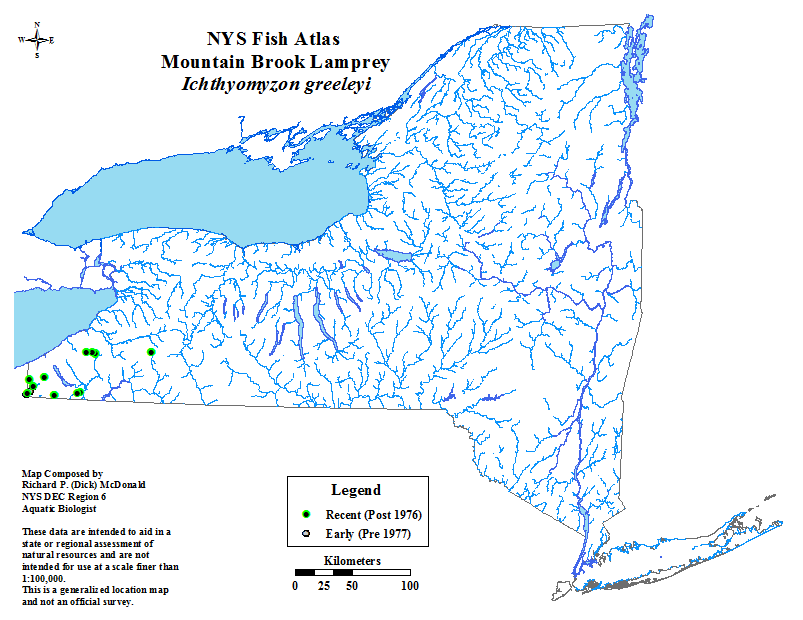
Mountain Brook Lamprey (Ichthyomyzon greeleyi)
This species is common in northwest Pennsylvania and adjacent parts of Ohio, with additional disjunct populations in the Ohio River drainage in Kentucky and West Virginia. Mountain brook lampreys also occur in the Cumberland and Tennessee Rivers in Tennessee, northern Alabama, Kentucky, and Virginia. The only New York records are from French Creek at the western border of New York, although these fish likely occur in additional Allegheny River tributaries north of the New York border.
This nonparasitic lamprey generally spends its life in small streams without moving to larger rivers, and appears to tolerate a wider range of habitats than some other lamprey species.
The spawning behavior of this species is similar to that of other lampreys, and has been most thoroughly described from Little Neshannock Creek near Wilmey, Pennsylvania (19 to 26 May, 1938). At the time of spawning, the water temperature was 18.9° C. Nests were built by males just upstream from riffles, and were excavated by moving pebbles to form an 8-10" diameter depression downstream from a flat stone about 6 to 12" in diameter. Once nest construction was initiated, other males often joined in the activity before proceeding to build their own nests. Nest building and spawning reached a peak in mid-afternoon.
Spawning and fertilization occurs when a female moves over a nest and attaches (via her mouth) to a nearby stone. The male then approaches her and they vibrate together, releasing milt and eggs. Usually five to nine lampreys are present near each nest, and spawning by one pair stimulates other pairs to spawn. Between spawning episodes, males continue to move pebbles around the nest. Ammocoete larvae reach 28 to 35 mm (slightly larger than one inch) by the end of the first summer. Larvae transform into adult-form lampreys during late fall or early spring, but the age at transformation has not been determined.
Though rarely witnessed, it's a spectacular sight to see these normally reclusive creatures in small streams during spawning season, dozens of whom can often been seen in full view -- almost ignoring the presence of humans -- while involved in spawning activity.
Distribution of the mountain brook lamprey in NY state.
An image of the Mountain Brook lamprey is also available for download.
